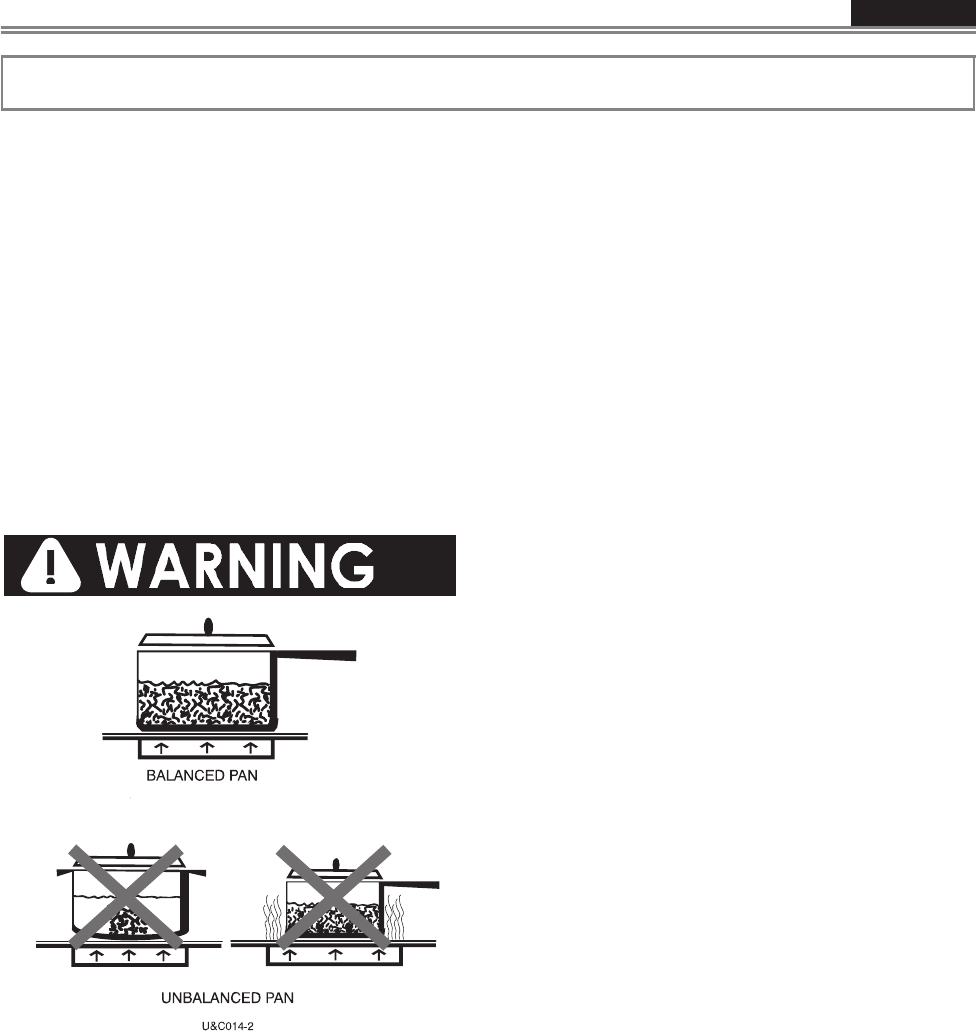
ENGLISH
Use & Care Manual
15
Cookware
GENERAL
The choice of pan directly affects the cooking
performance (speed and uniformity) for best result
select pans with the following features.
Flat base
When a pan is hot, the base (pan bottom)should rest
evenly on the surface without wobbling (rocking).
Ideal cookware should have a flat bottom, straight
side, a well fitting lid and the material should be of
medium to heavy thickness.
Rough finishes may scratch the cooktop.
Match Pan Diameter to radiant element
The base of the pan should cover or match the
diameter of the element being used.
COOKWARE CHARACTERISTICS
Cooking Utensil Guidelines
x Aluminium: heats and cools quickly frying,
braising, roasting. May leave metal markings on
glass.
x Cast Iron: heats and cools quickly Not
recommended. Retains excessive heat and may
damage cooktop.
x Copper: tin heats and cools quickly gourmet.
cooking, lined wine sauces, egg dishes.
x Enamel ware: response depends on base Not
recommended, metal Imperfections in enamel
may scratch cooktop.
x Glass Ceramic: heats and cools slowly not
recommended. Heats too slowly. Imperfections in
enamel may scratch cooktop.
x Stainless Steel: heats and cools at moderate
soups, sauces, rate vegetables, general cooking.
OBSERVE THE FOLLOWING POINTS IN
CANNING
Pots that extend beyond 1 of the surface unit's circle
are not recommended for most surface cooking.
However, when canning with water-bath or pressure
canner, larger-diameter pots may be used.
This is because boiling water temperatures (even
under pressure) are not harmful to the cooktop
surfaces surrounding the surface units.
However, do not use large diameter canners or
other large-diameter pots for frying or boiling
foods other than water.
Most syrup or sauce mixtures, and all types of frying,
cook at temperatures much higher than boiling water.
Such temperatures could eventually harm the glass
cooktop surfaces.
Be sure the canner fits over:
x the center of the surface unit. If your cooktop or
its location does not allow the canner to be
centered on the surface unit, use smaller
diameter pots for good canning results.
x Flat-bottomed canners must be used. Do not use
canners with flanged or rippled bottoms (often
found in enamelware) because they don't make
enough contact with the surface units and take a
long time to boil water.


















